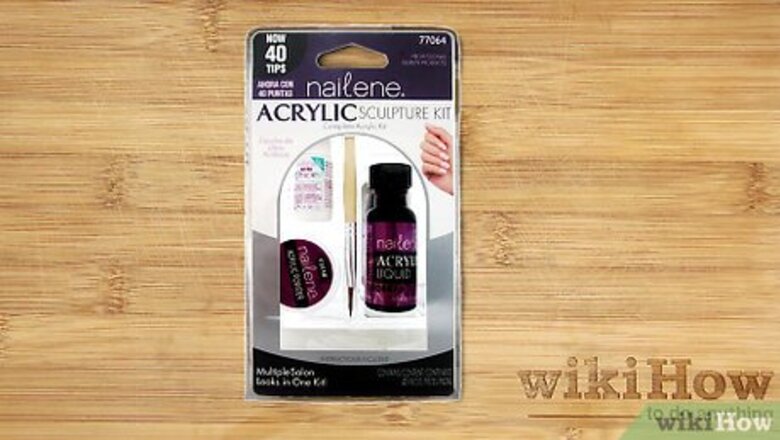
views
All you need are a few supplies from the drugstore and little bit of patience.
Buying Acrylic Nail Supplies
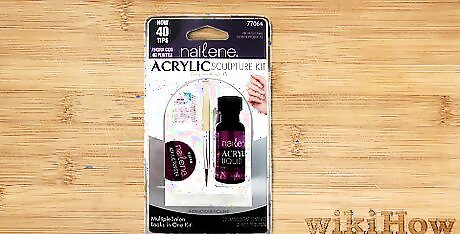
Consider an acrylic nail kit. If this is your first time doing your own acrylic nails, you may want to start with a kit. Kits contain everything you need to get started and come with detailed instructions to help you achieve the look you want. Make sure you read the ingredients so the monomer does NOT contain MMA. MMA (Methyl methacrylate) is a dental acrylic and is too hard for the natural nail. Look for EMA - Ethyl Methacrylate, that is what you want on your nails. Look for brands professional uses or google for something a lot of people recommend.
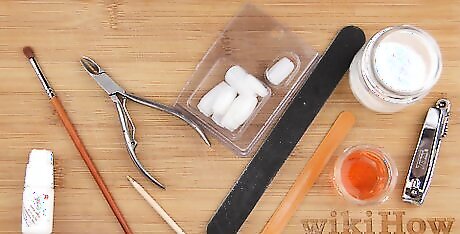
Decide to buy the supplies separately. For greater control over the appearance of your acrylics, you may want to buy the supplies separately. This way you'll also be prepared when it's time to reapply acrylic after your nails grow out. Go to a beauty supply store and buy the following supplies: Acrylic nail tips and nail tip glue. The tips are usually quite long, which allows you to trim and file them down to the shape and size you want. Acrylic nail clippers and files. Regular clippers and files aren't as effective on acrylic nails.180, 240, 1000 & 4000 grit should be enough. You might need an even coarser file than the 180 grit if the end result is very clumpy. Acrylic liquid and acrylic powder. These substances are mixed together to create acrylic nails. As said before, stay away from MMA monomers, go for the EMA (always read what ingredients is used!). Acrylic bowl and acrylic brush. You need these supplies to mix up the acrylic and apply it. Somewhere between size #8-12 might be a good choice. Training fingers or a training hand. You may be very eager to make your first acrylic nails on your own hands - or on someone else. But before that you should, and probably need, to practice on something that won't harm you or anyone else. Remember these are strong chemicals which may cause allergies if you aren't careful. Do your first (at least) 10 tries on a training finger or hand. When you are good enough so the material does not go outside of the practice nail, do a few more and then you can start to think about doing it on a real hand. Allergies are for life, if you are unsure, don't do it on anyone else than on yourself.
Getting Your Nails Ready
Remove old nail polish. Acrylic should be applied to clean nails, so remove your old polish before getting started. Use an acetone-based, oil-free nail polish remover to take it off. If you have old acrylic nails or gels to remove, soak them in pure acetone to remove them. Do NOT peel them off; soak them until it can be pushed away with ease. Peeling it off will damage your own nail, making it a lot thinner.
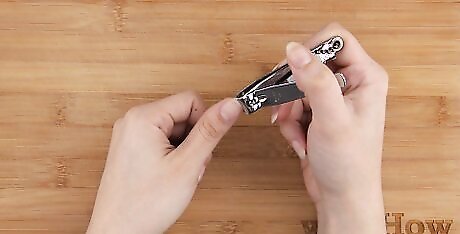
Trim your nails. To provide a good base for the acrylic, use a nail scissors or nail clippers to trim your natural nails to a short, even, manageable length. A few millimeters is good to have so you can glue the tips at the end where your natural smile line is. Use a nail file to even them out.
Buff the surface of your nails. Use a soft nail file to make the surface of your nails slightly rougher and less shiny. This provides a better surface for the acrylic to stick to.
Push back your cuticles. You want the acrylic to be adhered to your natural nails, not your skin. Push back your cuticles or trim them to keep them out of the way while you give yourself a manicure. Use a wooden cuticle pusher to push back your cuticles. Metal pushers can be used, but wooden are better for your nails. If you don't have a cuticle pusher, a wooden popsicle stick can be substituted. It's easier to push back cuticles when they're soft and wet, rather than dry. Soak your fingers in warm water for a few minutes before using the cuticle pusher, and preferably work on them a few days before so that they are extra fine for your treatment.
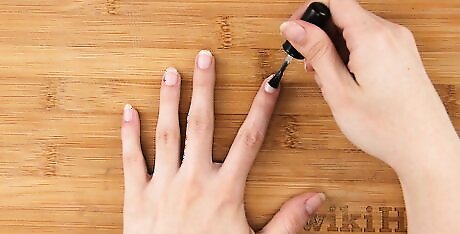
Use the nail primer. This removes the remaining moisture and oils from your nails to get them ready for the acrylic. This step is one of the most important for best adhesion. If oil remains on your nails, the acrylic won't stick. Use a cotton ball or preferably a lint-free paper towel to carefully rub the surface of your nails with acetone. Nail primer with acid is made with an methacrylic acid, which can burn. Be careful not to use too much or get it on your skin. There are acid-free primers if you are unsure of the acid ones.
Applying the Acrylic
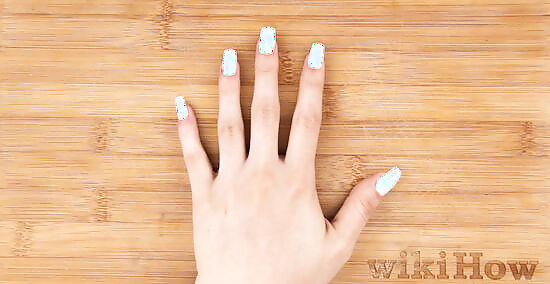
Apply the tips. Find the right size tips for your nail. If the tip doesn't fit your nail perfectly, file it down to size. A little too small can often looks better than a little too big. Place a dab of glue on the tip from side to side and apply it to your natural nail so that the bottom edge of the acrylic tip is centered halfway down the surface of your nail. Hold it in place for five seconds to allow the glue to dry. Do that on all 10 nails, then cut the nails to preferred length. If you accidentally apply the nail tip crooked, soak it in water for a few minutes to remove it, they dry your nail and reapply the nail tip. Use only a small amount of glue so that it does not touch your skin.
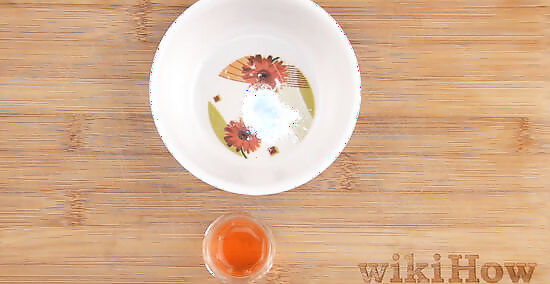
Get the acrylic materials ready. Pour the liquid acrylic into the acrylic dish, and pour some powder into a separate dish. Acrylic is a strong chemical that produces fumes that can be toxic, so make sure you're working in a well-ventilated area.
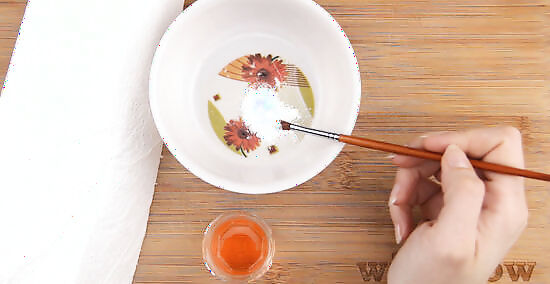
Load the acrylic brush with acrylic. Dip the brush into the acrylic dish. Push it all the way down and make sure all the bubbles goes away. Then brush it against the side of the bowl to remove excess liquid. Run the brush through the acrylic powder so that a small, moist ball collects on the end of the brush. You may have to practice a few times to achieve the correct ratio of liquid to powdered acrylic. The small ball of acrylic mixture should be moist and spreadable, but not too wet. The acrylic should stay on the brush, not drip off of the brush. Have paper towels handy in case you need to brush off extra moisture and to wipe the brush between strokes so the acrylic doesn't stick to the brush.
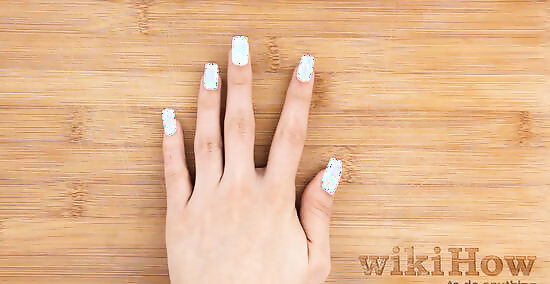
Apply the acrylic mixture to your nails. Start at the "smile line" - the bottom edge of the acrylic tip. Flatten the acrylic ball over the line and brush it down to the tip. Spread it quickly and smoothly so that the transition between your natural nail and the acrylic tip is smooth. Take a second ball of acrylic and place it near your cuticle, but not too close. With small circular movements, try to get the acrylic closer to the cuticle, without touching it, and then brush the acrylic down to make a smooth transition. Repeat the procedure with all ten nails. Remember to wipe your brush on a paper towel between every stroke. When you get the hang of it you won't need to do it as often. This is so the acrylic won't stick to your brush. If it is still on the brush you could dip the brush in the liquid while the acrylic is still wet on the brush, and then wipe it off again. To avoid lumps in the acrylic, be sure to use small single strokes in the same direction Less is more! If you have too much acrylic on your nails, you'll have to file for what feels like an eternity. Working with small beads is easier in the beginning. If you apply the acrylic correctly, there should be a gentle curve, rather than a harsh line, where the acrylic tip meets your natural nail. You may need to use more than one ball of acrylic per nail to achieve this. Don't apply the acrylic to your cuticles. It should start a few millimeters above your cuticle so that it adheres to your nail, not your skin.
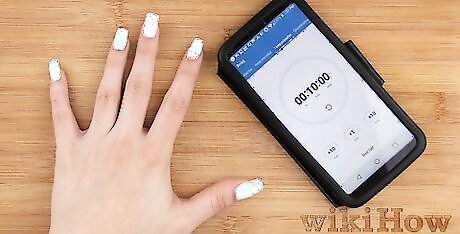
Let the acrylic dry. It should only take about ten minutes before the acrylic is completely set. Test it by tapping the surface of your nail with the handle of your acrylic brush. If it makes a clicking sound, it's ready for the next step.
Finishing the Nails
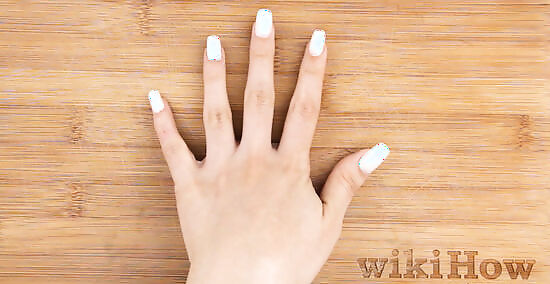
Shape the tips. Now that the acrylic has set, use a coarse nail file (180 grit for example) to shape the tips and file them to the length you want. Use a buffer to buff the surface of the nails, the 240 grit file takes away the scratches from the 180 grit file. Finish with an 1000 grit and after that the 4000 grit for the extra shine. With the 4000 it can be as shiny as a top coat if done correctly! Remember use a small brush to dust off the excess nail dust made by the drill, so that it doesnt mix with the nail polish!
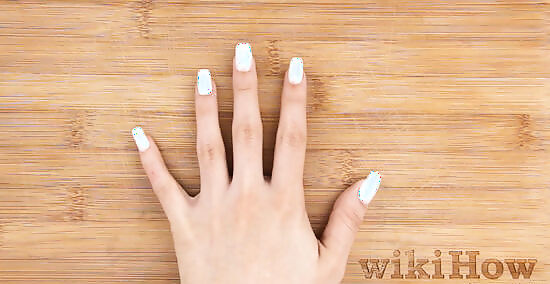
Paint your nails. You can use a coat of clear polish or choose to paint them with colored nail polish. Apply the polish to the entire nail to create a smooth, even surface.
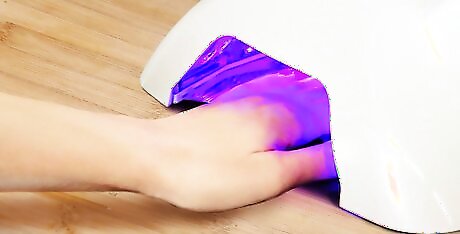
Maintain your acrylic nails. After about two weeks, your nails have grown out. Choose to either reapply acrylic or remove the acrylic from your nails. If your nails are green or yellow or in any other way looks unhealthy, DO NOT apply acrylic on your nails. Fungus and other nail conditions won't go away and need treatment! It will get worse if you apply acrylic nails on it. Nail fungus is highly contagious so don't use un-disinfected tools on you or anybody else.




















Comments
0 comment